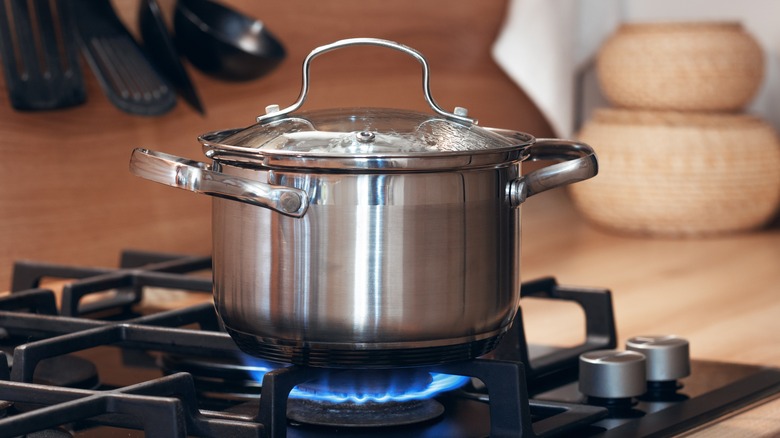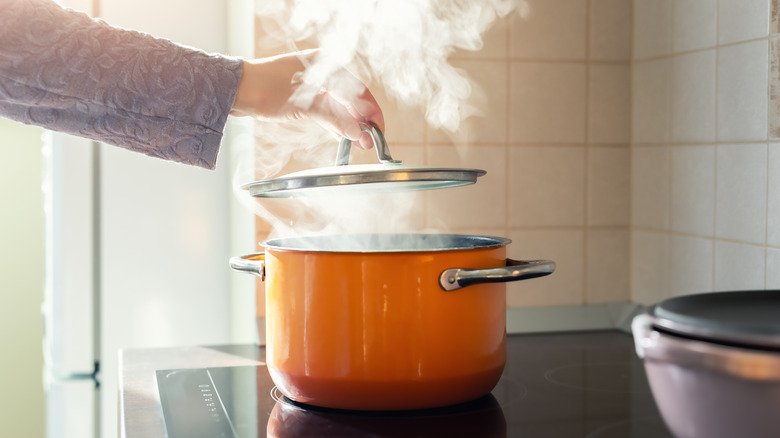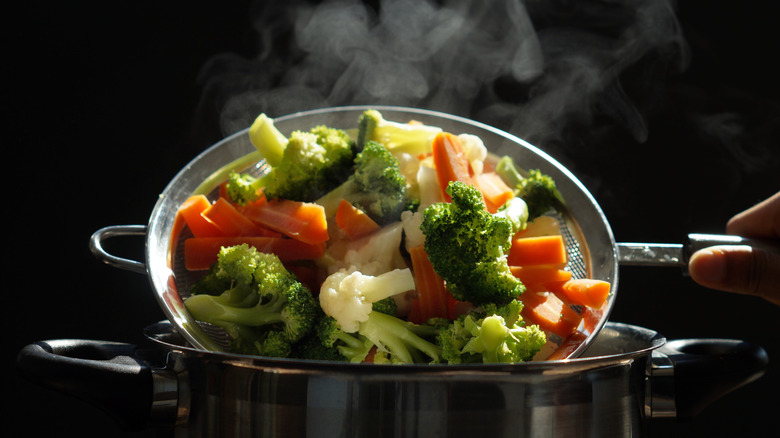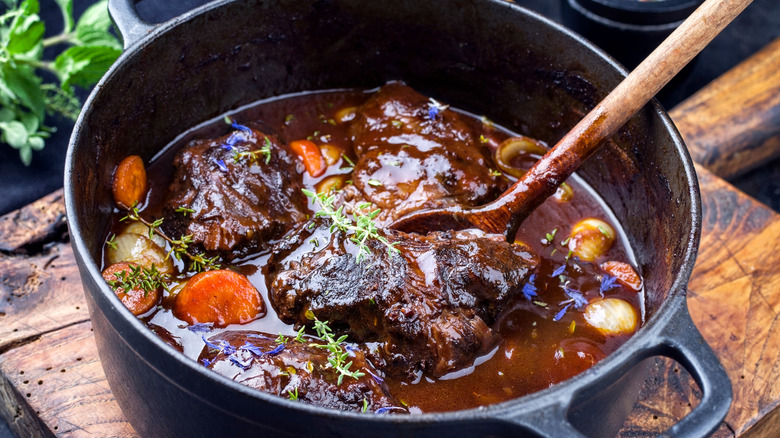Always Keep The Lid On For These 3 Common Cooking Methods
We all know that there are some cooking methods that lend themselves well to being covered, and some that don't. Pan-frying, sauce simmering, and searing are all uncovered methods of cooking, ones in which trapped moisture would drastically alter the results of the food being cooked. You wouldn't want a steak to come out flaccid and uninteresting, would you? The sear provides that crispness, as a result of moisture being drawn out of the meat as opposed to being locked in, per Exploratorium. With these methods, you're looking to release moisture instead of retaining it.
However, there are cooking methods in which keeping the lid on is the most effective way of cooking. Is pasta better boiled or pan-fried? Is sautéing really the best way to bring out the unique character and flavor of vegetables? If you're presented with a tougher cut of meat, would it not be better to slowly introduce moisture into the meat so that it is easier to chew and digest? All of these results can be achieved with the three simple cooking methods that work best with a lid: boiling, steaming, and braising.
A closed lid leads to a faster boil
The Merriam-Webster definition of one of the most annoying phrases of all time — a watched pot never boils — is "used to mean that time passes very slowly when one is waiting for something to happen if that is the only thing one is thinking about." The thing is, though ... if you ever have sat and watched and waited for a pot of water to boil, it does seem to take forever. Whereas if you simply ignore it, it'll boil in no time at all. Stranger things have happened in the kitchen. So while we can say with degrees of confidence that a watched pot never boils, we can also say that an uncovered pot doesn't boil nearly as fast as a covered one.
You want to keep the lid on your pot while your water is boiling because, as Cooks Illustrated explains, the cover keeps the heated water vapor from escaping, thus allowing that energy to recycle through the water and cause it to boil faster. Leaving the lid off will allow that energy to escape with the vapor. Your pot of water will still boil, but it will take minutes longer and require more energy input from the heating element to achieve. So lid your pot and go read the newspaper or prep some vegetables for our next method: steaming.
A closed lid traps steam
Steaming may not seem like a method of cooking that will bring out the most flavor, but that perception is incorrect. Vegetables in particular, when boiled or cooked in heavy seasonings will lose their unique character. According to Cuisine at Home, boiling will remove essential nutrients from vegetables and transfers them to the water, whereas steaming will keep the nutrients intact, making steam an extremely healthy way of preparing food. Steaming also allows the heat to gently coax out subtle nuances of flavor.
You can't steam anything properly without a lid. The lid is to the pot like a roof is to a house. It's all well and good to heat the house, but if there isn't a roof the heat won't stay in because it naturally wants to rise. Placing food in a perforated basket will allow the steam in the pot to rise and envelop the vegetables. Having the lid fit tightly over the basket traps the steam, allowing the food to cook quickly and efficiently without sacrificing any flavor.
A closed lid keeps a consistent simmer
A cooking method that doesn't seem to get nearly enough press is the technique of braising. According to the Los Angeles Times, braising is a moist-heat cooking technique used to tenderize tougher cuts of meat. You place just enough liquid in the pot to cover the bottom to prevent the meat from sticking. The liquid is first brought to a boil and then the heat is reduced to a simmer. The pot is then covered and placed in the oven to begin a long, slow cooking process.
The benefit of the cover for this is that the temperature inside the pot needs to be controlled while the simmering is happening. Constantly removing the lid and allowing in the outside air will immediately cause a temperature change inside the pot, thus losing that consistent simmer. Like steaming, braising uses a gentler touch to bring out flavors, tenderize meat, and lead to an overall pleasant eating experience that would not have been achieved without that simple lid.



